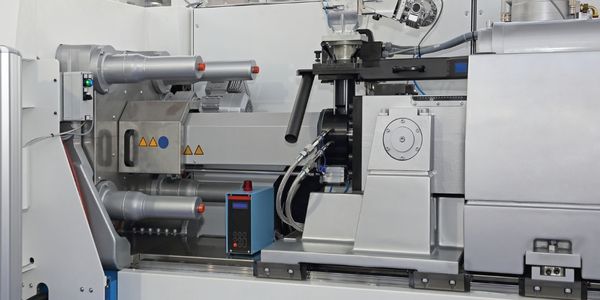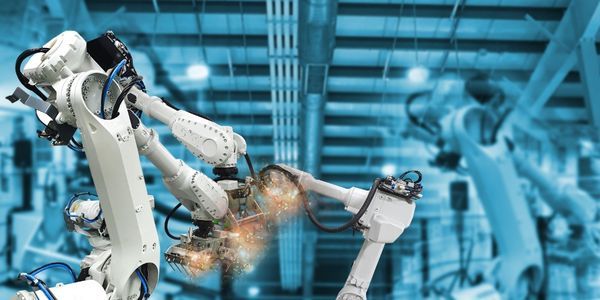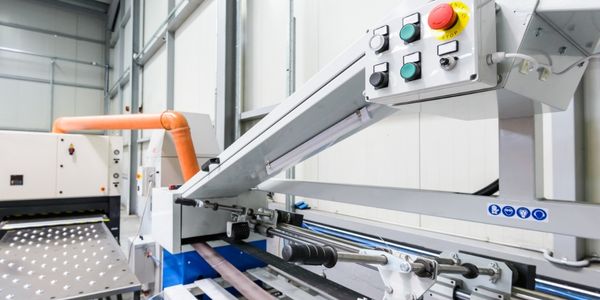Customer Company Size
Mid-size Company
Region
- Asia
Country
- Thailand
Product
- WebAccess/SCADA
- WISE-4050 wireless I/O modules
- UNO-2473G embedded automation computer
Tech Stack
- SCADA
- Wireless I/O
- Embedded Automation
Implementation Scale
- Enterprise-wide Deployment
Impact Metrics
- Productivity Improvements
- Cost Savings
Technology Category
- Platform as a Service (PaaS) - Connectivity Platforms
Applicable Functions
- Discrete Manufacturing
- Maintenance
Use Cases
- Manufacturing System Automation
- Condition Monitoring
Services
- System Integration
About The Customer
IBCON Co., Ltd. is an automation systems supplier and systems integrator that assists Thai manufacturers with overcoming technical challenges. With more than 20 years of experience in Thailand’s industrial automation industry, IBCON has gained considerable expertise in modernizing manufacturing infrastructure. Because most Thai manufacturers still conduct manual machine monitoring, IBCON sought to improve management efficiency by developing equipment monitoring systems capable of automatic data collection, which would then reduce maintenance costs and streamline workflows.
The Challenge
In Thailand’s export-oriented economy, manufacturing is the primary driver of economic development and growth. However, globalization provides increasing opportunities to sell Thai products around the world, it also fosters fierce competition between rival companies. In this ever more competitive market environment, manufacturers must leverage every innovation available to maximize the value and efficiency of their production lines. Yet, most factories in Thailand have limited space for new equipment. Facilities also vary widely in terms of environmental conditions and the ease of adding new cabling. Moreover, with limited margins leaving little funding for infrastructure investments, most Thai manufacturers cannot afford to even replace existing equipment. Considering these constraints, an effective equipment monitoring system must be sufficiently compact and flexible to allow installation in diverse factory environments and to support a wide range of machinery and equipment.
The Solution
Advantech supplied its WISE-4050 wireless I/O modules, UNO-2473G embedded automation computer, and WebAccess/SCADA browser-based software to provide a platform solution that is easy to develop, configure, and deploy. Using this platform, IBCON was able to quickly design an innovative and cost-effective monitoring system that could be easily deployed in a range of factory environments. Advantech’s WebAccess/SCADA provides manufacturers with a browser-based software package for supervisory control and data acquisition (SCADA) operations. With the provision of a user-friendly HTML5-based dashboard equipped with extensive libraries and development tools for designing unique animated graphics displays, real-time data graphs, and data/alarm log reports, WebAccess/SCADA also facilitates data analysis for intelligent management functions, such as scheduling control and trend analysis.
Operational Impact

Case Study missing?
Start adding your own!
Register with your work email and create a new case study profile for your business.
Related Case Studies.

Case Study
Plastic Spoons Case study: Injection Moulding
In order to meet customer expectations by supplying a wide variety of packaging units, from 36 to 1000 spoons per package, a new production and packaging line needed to be built. DeSter wanted to achieve higher production capacity, lower cycle time and a high degree of operator friendliness with this new production line.

Case Study
Robot Saves Money and Time for US Custom Molding Company
Injection Technology (Itech) is a custom molder for a variety of clients that require precision plastic parts for such products as electric meter covers, dental appliance cases and spools. With 95 employees operating 23 molding machines in a 30,000 square foot plant, Itech wanted to reduce man hours and increase efficiency.

Case Study
Fully Automated Visual Inspection System
Tofflon has developed a fully automatic machine that uses light to inspect vials, medicine bottles, or infusion containers for glass fragments, aluminum particles, rubber grains, hairs, fibers, or other contaminants. It also detects damaged containers with cracks or inclusions (microscopic imperfections), automatically removing faulty or contaminated products. In order to cover all production processes for freeze-dried pharmaceuticals, Tofflon needed to create an open, consistent, and module-based automation concept.

Case Study
SAP Leonardo Enabling Rocket Science
At times, ULA has as many as 15 different operating systems dedicated to overlapping processes, such as rocket design, testing, and launch. Multiple systems created unnecessary costs and unwanted confusion among workers at offices, factories, and launch sites in different location. In order to improve collaboration and transparency during vital activities that directly influence mission success, ULA wanted to improve data sharing and streamline manufacturing processes.

Case Study
IIC Smart Manufacturing Connectivity for Brown-field Sensors
The discrete manufacturing domain is characterized by a strictly hierarchical structure of the automation systems, commonly referred to as the automation pyramid. Data acquired by a sensor typically flows through an IO-module into a Programmable Logic Controller (PLC) which manages the local real-time control system. As all process data are concentrated in the PLC, re-programming the PLC and thus, implementing interfaces to access these data appear to be the natural choice to transfer them to the IT system. However, for brownfield installations this choice has proven impracticable for the following two reasons:In brownfield facilities, PLC usually operate within a once-specified environment and are rarely re-programmed. That is why the active staff is often not familiar with the code and lacks of the competence to modify the existing implementation in a reasonable amount of time.Furthermore, for cost reasons, any PLC was selected to exactly match the requirements of the environment within which it was intended to operate. That is why it cannot be assumed that a PLC will be able to support additional tasks such as communicating data through additional interfaces.

Case Study
Smart Factory Solutions for Tobacco Industries: Bridging the Manufacturing Generation Gap and Improving Operational Efficiency
The tobacco industry, represented in this case by British American Tobacco (BAT), is facing a decline in cigarette volumes worldwide. This decline has led to an increased emphasis on efficient supply chains and optimized production processes. The industry is also grappling with the need for agile production facilities and the integration of Industry 4.0 to accommodate diverse production requirements. BAT, in particular, was seeking a factory solution to automate their product control processes, from the transportation of tobacco and cigarette paper to the placement on cigarette machines and the packing conveyor. The company also needed to support the continuous use of legacy equipment, such as relay-controlled cigarette machines dating back to the 90s and AMK servo drive systems, to sustain production levels at speeds of 8000 to 16000 pieces per minute. Furthermore, changing regulatory guidelines necessitated flexibility in labeling requirements.







